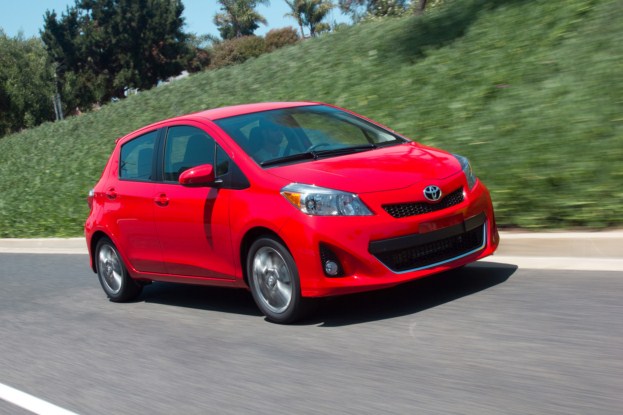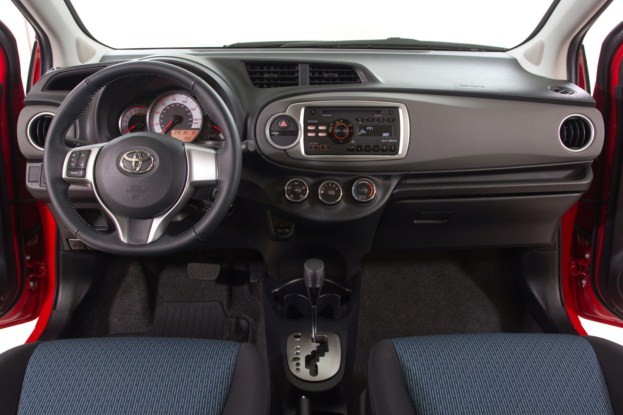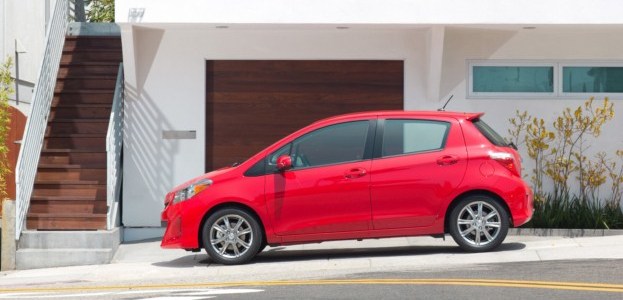When Toyota introduced the Yaris subcompact back in 2007, it was welcomed with open arms. Not only were gas prices beginning to climb again, but it was replacing the Echo, which was, for the most part, a flop. Despite getting a similar powertrain and fuel economy that didn’t quite match the Echo’s (although they’ve since made up for it,) it was better in almost every way. Over the last few years, however, sales have begun to slow due to more competitive options from other brands. So for 2012, Toyota gives us the third generation Yaris…
New for 2012
Completely redesigned inside and out, the 2012 Toyota Yaris brings some significant changes to their least expensive car. To say that the changes are significant is a major understatement, as the entire car has been overhauled to get rid of the old Yaris’ cheap econo-box feel and give buyers a sense that they’re driving something a little more premium. Take a look at some of the comparison photos:
| 2011 Yaris | 2012 Yaris |
|---|---|
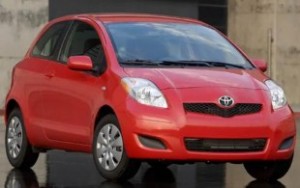 |
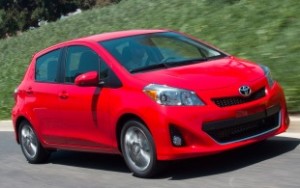 |
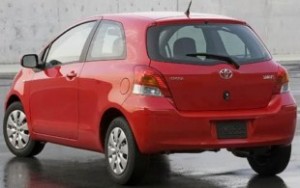 |
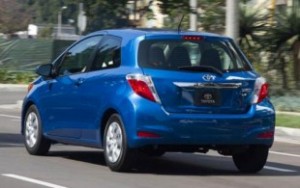 |
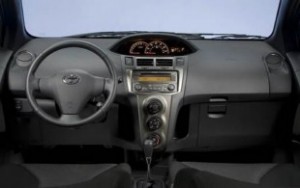 |
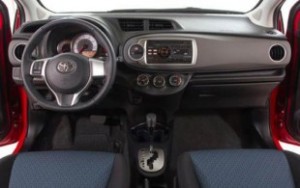 |
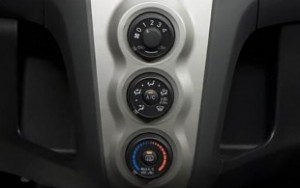 |
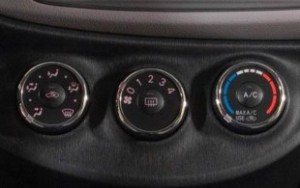 |
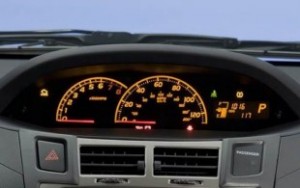 |
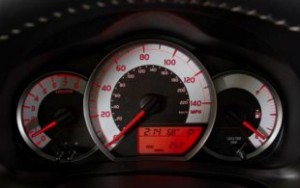 |
As you can see, it looks like a real car now. No awkward center-mounted gauge cluster, higher quality materials, no weird (albeit charming) vertically-positioned climate controls, and most of all, much better design inside and out. One interesting and fortunate change is the deletion of the sedan – for 2012, only the 2- and 4-door hatchback models are available. Not everybody’s going to like that, but it’s a segment that should be defined by efficiency, and that’s where hatchbacks excel. And now that hatches are no longer the ugly child, I don’t see that being a major issue.
You can’t see it from the pictures, but the 2012 Yaris is also extended a few inches in length, allowing for more cargo room (up from 9 cubic feet to 15.6 with the rear seats up.) That’s a huge improvement, although it’s still less than some competitors.
One thing that didn’t change from last year is the powertrain – the Yaris is still powered by Toyota’s 1.5-liter four-cylinder, producing 106 hp through a 5-speed manual or 4-speed automatic. This test car had the manual, which I highly prefer over the antiquated automatic I drove a couple years ago (same transmission in this one.) Clutch pedal travel is consistent and smooth, and shifting is easy, except the shift from fourth gear to fifth, which requires a more precise and time-consuming “up-right-up” movement instead of the typical “up-and-to-the-right.”
Despite being the same engine and transmission, they were able to squeeze a few more MPGs out this year, bringing the numbers up to 30 city/38 hwy mpg in the manual from 29/36. Opt for the old-fashioned automatic trans and it drops to 30/35. Also changed this year is the suspension, which Toyota gave a thorough tuning to give the car a more solid drive. It’s noticeable, and even though the car still doesn’t corner like a hot hatch, it feels more confident and stable in the turns and at high speed.
The interior redesign in the 2012 Yaris is a huge deal. You’re no longer constantly reminded of the fact that you’re driving an econo-hatch. The steering wheel actually has buttons on it (SE trim,) and it’s even flattened a bit at the bottom and contoured for real-life human hands. The seats feel like actual, bolstered seats, not cloth-wrapped plywood, and most of the touch points are covered in soft material. There’s still no sunglasses holder up above, but you can store them in one of the two cubbies in the center console area (no covered console,) one of the four cup holders within reach, or attach them to the sun visor, which extends when needed (something some Lexuses don’t even have.)
Pricing & Options
The 2012 Toyota Yaris’ price gets bumped a bit this year, thanks to, well, a much better car, and quite a bit more standard equipment. The base L trim starts at $14,115. Stepping into the LE will cost you $15,625 and bags you power windows, remote keyless entry, a 6-way adjustable driver seat, steering-wheel-mounted audio controls, a better interior trim, a 60/40-split fold-down rear seat (the L just has a bench seat,) Bluetooth, and an upgraded sound system.
The SE trim, which we drove, will start at $16,400 and gets you bigger 16-inch wheels with sport-tuned suspension and four-wheel disc brakes, cruise control, an upgraded upholstery (which you can see in the photos,) smoke-trim headlamps, fog lamps, color-keyed grille with sport mesh insert, color-keyed front and rear underbody spoilers, rear spoiler and rear diffuser, and a chrome exhaust tip. Your only option in the 2012 Yaris is cruise control, and only on the LE trim. It’s standard on the SE and you simply can’t get it in the L.
Again, there’s no getting around the fact that you’re driving a cheap car, but they’ve made it much less obvious this year. The car is actually fun to drive, handles well, and since the measly engine doesn’t have to carry around much weight (it’s actually lighter than last year,) it feels peppy so long as you’re driving the manual.
Before You Buy
Make sure to check out the Yaris’ competitors, which are better at some things and worse at others, as usual. The Honda Fit, Nissan Versa, and Hyundai Accent all have a little more cargo room, while only the Accent beats out the Yaris in fuel economy (and power.) Definitely check out the new Hyundai Accent – on paper, it’s one of your best bets this year. The Ford Fiesta and Mazda2 are also worth taking a look at.

